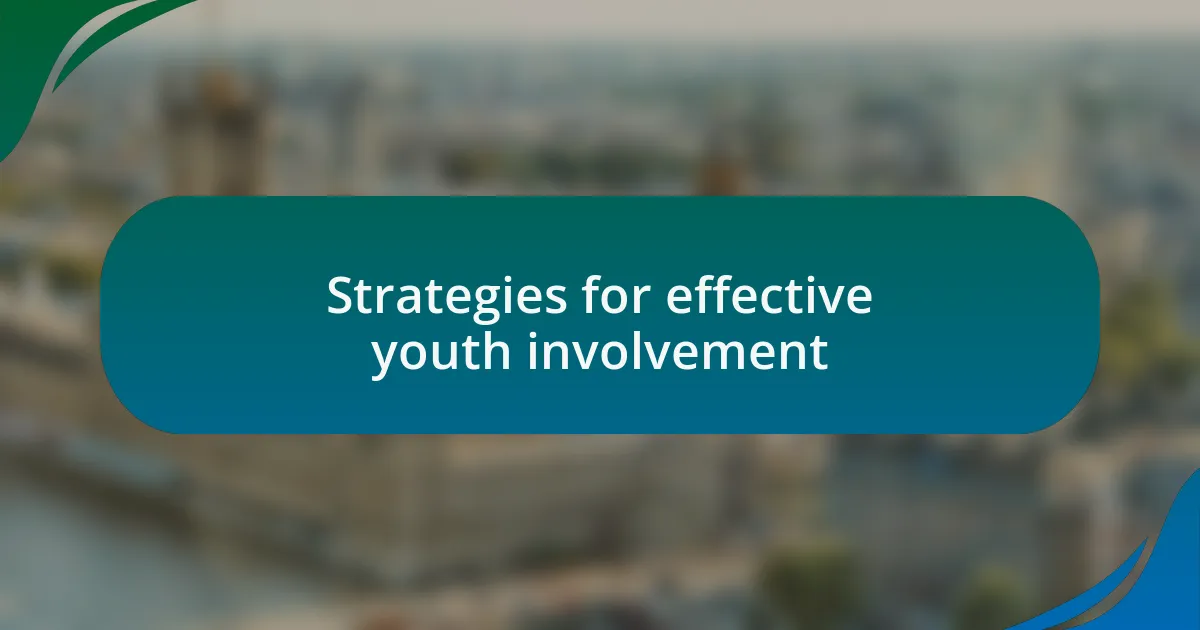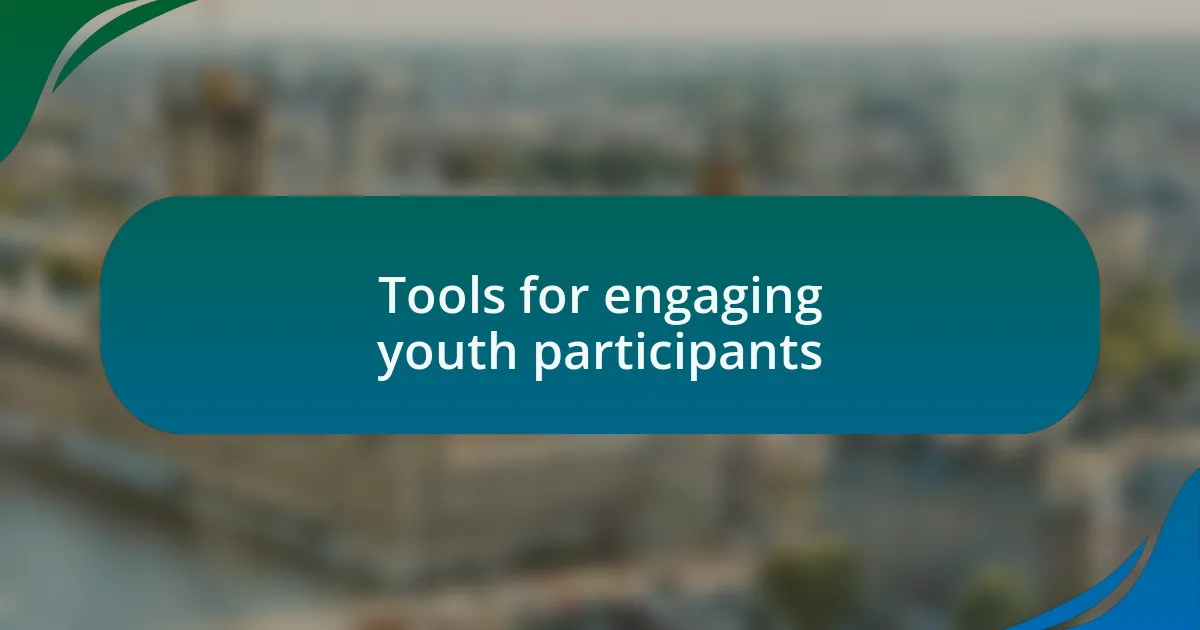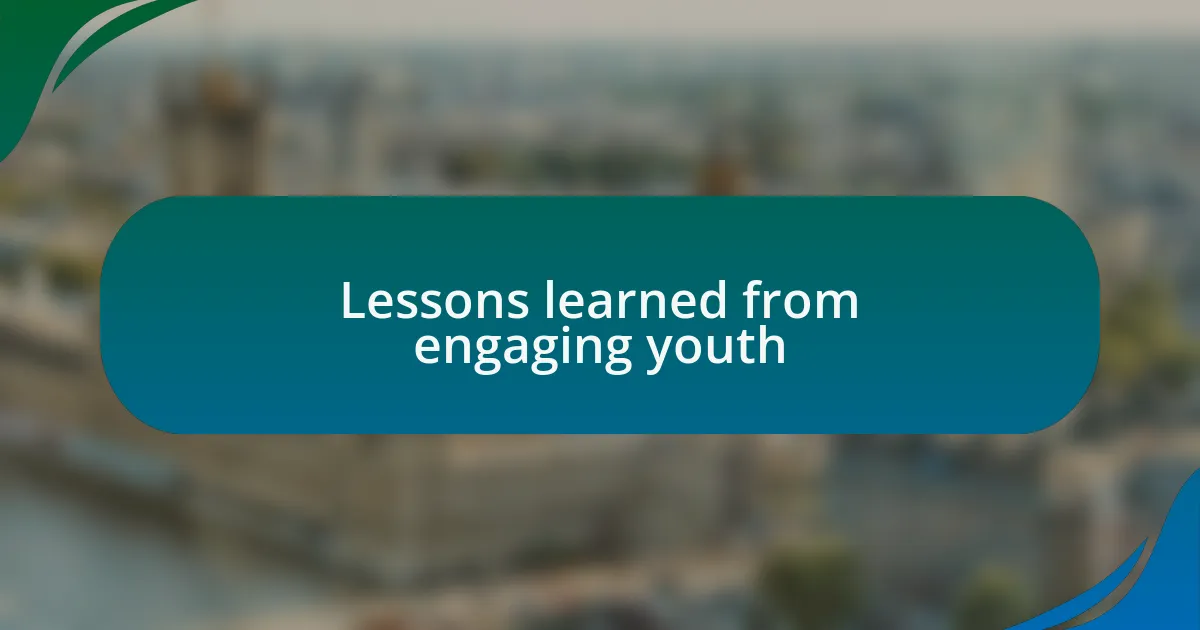Key takeaways:
- Hands-on workshops and mentorship opportunities foster creativity and bridge generations.
- Utilizing social media and interactive digital platforms amplifies youth voices and enhances engagement.
- Creating a safe space for expression leads to authentic dialogue and stronger community connections.
- Involving youth in decision-making fosters a sense of ownership, increasing their investment in projects.

Strategies for effective youth involvement
One effective strategy I’ve found for engaging youth in urban planning is to create hands-on workshops. I remember organizing a session where we invited local teens to design their ideal park area. Watching their faces light up as they sketched out their visions made it clear how vital it is to give them a platform to express their creativity and connect with their community.
Another approach that resonated with me was facilitating mentorship opportunities between younger and older generations. During one event, an elderly architect shared stories from his early career with a group of high school students. This personal interaction sparked not only interest but also a deeper understanding of how their ideas could evolve over time. Isn’t it amazing how a simple conversation can bridge generations and inspire youth?
Additionally, leveraging social media platforms can amplify youth voices. When I encouraged local youth to share their thoughts on our city’s design through Instagram polls, I was surprised by the volume of engagement. It opened up a dialogue that allowed them to feel seen and heard. How often do we underestimate the potential of digital platforms to empower young people?

Tools for engaging youth participants
One valuable tool I’ve utilized is collaborative mapping, where youth can directly contribute to geographic information systems (GIS) projects. I recall a project where we handed out blank maps and asked young participants to mark areas they found problematic or needed improvement. Their passionate discussions about their neighborhoods revealed not just their concerns, but also their pride and attachment to their community. Isn’t it fascinating how a simple map can uncover a wealth of insights?
I also recommend using interactive digital platforms for brainstorming sessions. In one experience, we used a virtual whiteboard where teens could post sticky notes with their ideas about urban spaces. The energy in that virtual room was palpable, as they reacted in real time to each other’s suggestions. This interaction highlighted how technology can amplify youth voices, proving that they have innovative solutions worth sharing. Why not tap into that creative energy?
Lastly, I’ve found that gamifying the planning process can create a fun and engaging atmosphere. During a community design charrette, we turned brainstorming into a game where participants earned points for each idea shared. It was incredible to see the enthusiasm as teens competed to create the most imaginative space. Who knew that competition could be a catalyst for collaboration?

Lessons learned from engaging youth
Engaging youth in urban planning taught me the importance of listening and validating their voices. In one project, I closely observed how a simple dialogue could shift their perceptions of community involvement. When they felt heard, their level of engagement skyrocketed. Isn’t it interesting how a few authentic conversations can turn skepticism into enthusiasm?
I also learned that fostering a safe space for expression is crucial. I remember facilitating a workshop in a local park, surrounded by the very structures they wanted to discuss. The atmosphere shifted as they shared both their dreams and frustrations about their neighborhood. Those moments of vulnerability revealed not just their ideas for improvement but also the personal connections they had with their environment. How can we, as facilitators, create more of these spaces for open dialogue?
Moreover, I realized that youth thrive on the sense of ownership in a project. While collaborating on a mural design, I noticed a young participant light up when her suggestion was incorporated. That sense of agency made her more invested in the project. When youth feel like integral parts of the process, their commitment and innovation can truly shine. What could be more rewarding than seeing them take pride in their contributions?